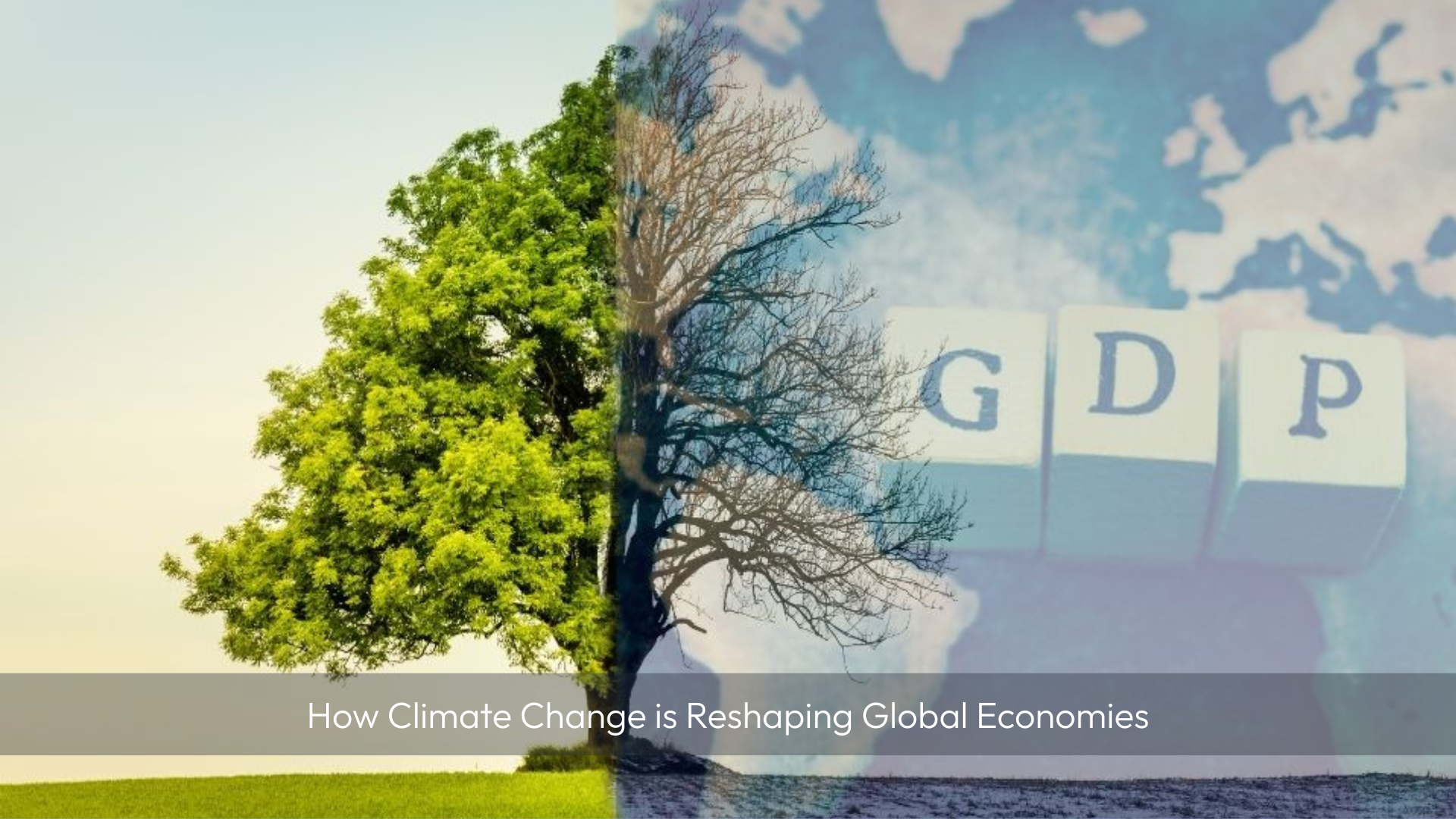Climate change is not just an environmental issue but an economic disruptor. From extreme weather affecting supply chains to shifting investment trends, climate-related challenges reshape industries, policies, and global markets.
In this blog, we’ll explore how climate change is impacting economies, the industries at risk, and what businesses and governments are doing to adapt.
1. Climate Change and Economic Disruptions
Rising global temperatures, natural disasters, and environmental shifts are leading to economic instability. Key ways climate change is affecting economies include:
- Supply Chain Disruptions – Extreme weather damages infrastructure, disrupts transport, and affects production.
- Rising Costs of Goods & Services – Agriculture, energy, and insurance industries face increased costs due to unpredictable weather patterns.
- Job Market Shifts – Traditional industries (fossil fuels, manufacturing) are declining, while green energy and sustainability jobs are increasing.
- Higher Insurance Costs – Floods, wildfires, and hurricanes are causing record-breaking damage, leading to higher insurance premiums.
- Strain on Public Budgets – Governments spend billions on disaster relief, infrastructure repairs, and climate adaptation programs.
📉 Example: The 2023 floods in Pakistan caused an estimated $30 billion in economic losses, damaging agriculture, housing, and infrastructure.
2. Industries Most Affected by Climate Change
🌾 Agriculture & Food Production
- Droughts, floods, and changing weather patterns reduce crop yields.
- Rising temperatures affect livestock health and food quality.
- Food shortages lead to increased prices and global trade disruptions.
📉 Example: Coffee and cocoa production in Africa and South America is threatened by extreme heat, impacting global prices.
💡 Energy & Utilities
- Heatwaves increase electricity demand for cooling, straining power grids.
- Water shortages impact hydropower production.
- Fossil fuel industries face regulations and declining investments.
📉 Example: France’s nuclear power plants had to reduce output due to low river water levels needed for cooling reactors.
🏗️ Infrastructure & Real Estate
- Coastal cities face rising sea levels, requiring costly flood prevention measures.
- Extreme weather increases building damage and insurance costs.
- Climate risk is driving real estate price fluctuations in high-risk areas.
📉 Example: Miami, Florida, is experiencing “climate gentrification,” where properties in lower-risk areas increase in value while coastal areas face declining demand.
💰 Insurance & Banking
- More frequent disasters mean higher claims and rising insurance premiums.
- Banks are reassessing investment risks in fossil fuels and high-risk regions.
- Green bonds and sustainable investments are gaining traction.
📉 Example: California insurance companies are refusing to cover homes in wildfire-prone areas due to rising costs.
3. The Rise of the Green Economy
Despite these risks, climate change is also driving economic opportunities in sustainability-focused industries:
🔋 Renewable Energy Boom
- Investment in solar, wind, and hydrogen energy is skyrocketing.
- Governments are offering tax incentives for clean energy adoption.
- Companies are racing to develop energy storage solutions.
📈 Example: The Inflation Reduction Act (U.S.) allocated $369 billion for clean energy and climate projects.
🚗 Electric Vehicles (EVs) & Green Transportation
- Governments are phasing out gas-powered cars in favor of EVs.
- Public transport systems are shifting to electric and hydrogen-powered fleets.
- Battery technology improvements are making EVs more affordable.
📈 Example: Norway aims to have 100% of new car sales be electric by 2025.
🏢 Sustainable Business Practices
- Companies adopting carbon-neutral goals attract more investors.
- Circular economies (recycling, reducing waste) are gaining traction.
- Green startups and ESG (Environmental, Social, Governance) investments are rising.
📈 Example: Google and Apple have committed to carbon neutrality by 2030.
4. Government Policies & Global Climate Agreements
Governments worldwide are implementing policies to combat climate change and protect economies:
🌍 Carbon Taxes & Emission Caps – Companies must pay for pollution, incentivizing clean energy adoption.
🌱 Green Investments – Public funding for climate resilience projects and green technologies.
📜 Stricter Environmental Regulations – Industries must comply with sustainable practices or face penalties.
💰 Climate Financing for Developing Countries – Richer nations helping poorer nations transition to greener economies.
📉 Example: The European Union’s Green Deal aims for carbon neutrality by 2050, investing billions in green energy.
5. The Future of Global Economies in a Changing Climate
Who Will Succeed?
✔ Nations investing in renewable energy and sustainable industries.
✔ Companies prioritizing eco-friendly products and business models.
✔ Individuals & entrepreneurs embracing climate-conscious innovations.
Who Will Struggle?
❌ Fossil fuel-dependent economies that fail to diversify.
❌ Regions vulnerable to extreme climate disasters without adaptation plans.
❌ Businesses that ignore climate risks and consumer demand for sustainability.
Final Thoughts: A Critical Moment for Economic Transformation
Climate change is no longer just a future concern—it’s reshaping global economies today. While some industries are struggling, others are innovating and thriving in a new green economy.
The question is: Will businesses and governments act fast enough to adapt, or will climate inaction lead to even bigger economic disasters?

